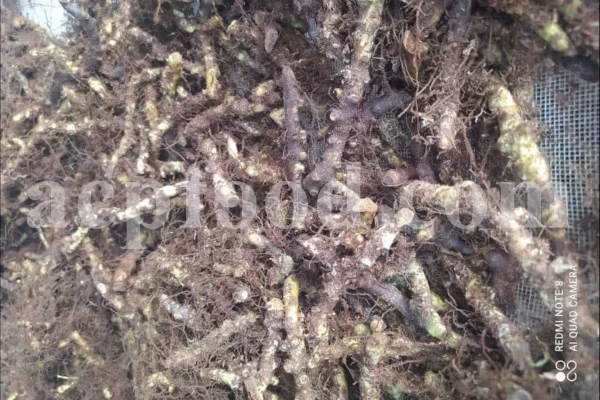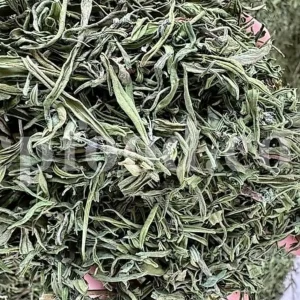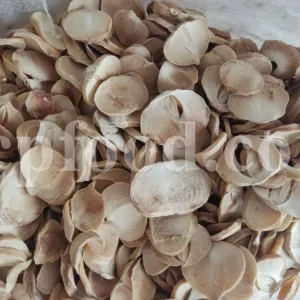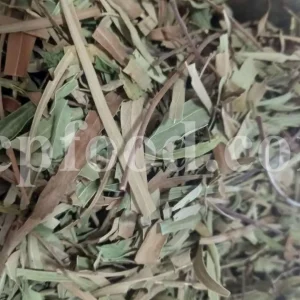GENERAL DATA
Plant Parts: Underground stem
Cultivation Mode: Wild Collection
In Manufacturing: Pharmaceutical, tea
🌿 Industries That Use Polypody Root (Polypodium vulgare L.)
Polypody root—known traditionally as Bisfaij in Persian and Unani medicine—is the dried rhizome of Polypodium vulgare, a fern native to Europe, the Caucasus, and parts of Western Asia. The root is prized for its mild laxative, expectorant, and tonic properties.
1. Pharmaceutical & Traditional Medicine Industry
Polypody root is used in European folk medicine, Traditional Persian Medicine (TPM), and Unani systems as a mild purgative and respiratory tonic.
-
Digestive Uses:
-
Mild laxative for constipation
-
Digestive tonic for sluggish liver and spleen conditions
-
-
Respiratory Uses:
-
Soothes coughs, especially dry and irritated throats
-
Mild expectorant for phlegmy conditions
-
-
Other traditional indications:
-
Obstructions of the liver and spleen
-
Used in formulations to balance bile and treat “safra” imbalances
-
✅ Used in compound formulas or decoctions with Licorice, Fennel seeds, or Senna.
2. Herbal & Nutraceutical Industry
Modern herbalists use Polypody root in digestive and respiratory support supplements.
-
Included in:
-
Herbal detox and liver support blends
-
Gentle herbal laxative formulations
-
Syrups or elixirs for bronchial health
-
✅ Sometimes combined with Angelica, Thyme, or Marshmallow root.
3. Functional Tea & Herbal Beverage Industry
Though less common, Polypody root is used in herbal tea blends for gentle bowel regulation and respiratory wellness.
-
Forms:
-
Dried sliced root for decoction
-
Combined with licorice or sweet herbs to mask bitterness
-
✅ Root contains glycyrrhizin-like compounds, contributing a sweet aftertaste.
4. Ethnobotanical & Academic Research
-
Research focuses on:
-
Triterpenes and flavonoids with anti-inflammatory and hepatoprotective potential
-
Use in traditional liver and spleen tonics
-
Role as a mild botanical laxative
-
✅ Studied as part of multi-herbal formulations in Unani and Persian traditional practice.
5. Ethnic, Organic & Export Markets
-
Exported from Iran and Eastern Europe in forms like:
-
Dried rhizome (whole or cut)
-
Powdered root for formulation use
-
Included in TPM and Unani herb bundles
-
✅ Sought after by herbal apothecaries, Persian medicine practitioners, and Unani pharmacies.
✅ Summary of Key Applications
| Industry | Common Uses |
|---|---|
| Pharmaceutical & Traditional | Mild laxative, liver tonic, cough relief |
| Herbal & Nutraceutical | Detox blends, expectorant syrups, digestive support |
| Tea & Beverage | Bitter-sweet decoctions for liver and bowel health |
| Ethnic & Organic Markets | Whole root or powder for traditional use in Iran and India |
| Academic Research | Liver support, triterpenoid content, traditional compound uses |
🌱 Key Features of Polypody Root
-
Botanical name: Polypodium vulgare L.
-
Traditional name: Bisfaij (بِسفَیج)
-
Part used: Rhizome (dried root)
-
Flavor profile: Bitter-sweet
-
Main compounds: Polypodoside A, triterpenes, flavonoids
-
Primary actions: Laxative, hepatotonic, expectorant
-
Traditional forms: Decoction, powder, syrup
PRODUCT NAME IN DIFFERENT LANGUAGES
Persian Name: بسفایج/ Bisfaij- Bispais
German Name (Deutschland, Austria, Switzerland): Engelsüßwurzel, Gemeiner Tüpfelfarn, Gewöhnlicher Tüpfelfarn
French Name (France, Belgium, Switzerland, Quebec): Polypode commun
HARVEST CALENDAR
Feb
Mar
Apr
May
Jun
Jul
Aug
Sep
Oct
Nov
Dec
To order Polypody root, please contact us.
About Polypodium Vulgare
Polypody is an underground stem of a perennial fern that reaches thirty centimeters in height. This plant does not have flowers and is a leaf attached directly to the underground stem. This plant only has a petiole-like stem that is the link between the leaf and the underground stem.
The leaf of this plant has deep cuts that divide it into small and elongated pieces. Parts that grow successively or alternately with respect to the main vein and their length decreases from the bottom to the top to reach the tip of the plant. The overall shape of this leaf is triangular and there are orange seeds behind all its parts.
The underground stem of the plant has horizontal growth spurs and new stems grow from its parts. This underground stem is narrow, dark-colored and knotted, and new and narrow roots grow from each knot, and a new plant grows from the same place. The new underground stem of this plant is green and turns red and black as it gets older.
The best type is thick and has a sweet and sour taste similar to cloves, and inside is almond green.
Polypody Root Temperament
Second degree of hot and dry.
Polypodium Vulgare Chemical Constituents
Butyric acid, Hexanoic acid, Lauric acid, Isovaleric acid, Methyl butyric acid, Samambain.
Polypody Rhizome Health Benefits
It cures flatulence, colic, leprosy, black bile diseases, and joint pain. Eating it with honey syrup helps to expel black bile substances and thick and slimy mixture from the stomach and joints and does not harm the body. Drinking Wall Fern root decoction with non-alcohol beer or honey sherbet is useful for all diseases of black bile, colic and flatulence. It expels any excess phlegm and is enlivening. Drinking its decoction with Licorice and Anise improves cough, shortness of breath and asthma.
Constantly drinking its decoction with Jujube is very beneficial for hemorrhoids. Drinking 10 grams of its decoction plus snake cucumber or Manna of Hedysarum cures hemorrhoids, chronic stomach pain and epilepsy. Seven days of drinking a decoction of 3.5 grams of Adder’s Fern root and 100 grams of snake cucumber seeds will cure melancholy and leprosy.
Its poultice is useful for sprained nerves and fissures between fingers.
Polypody Root Side Effects
It is harmful for kidney and chest.
Polypody Root Modifiers
Yellow Myrobalan for kidney, Maidenhair Fern for chest. To get rid of chest damage, you can cook and crushed Polypodium vulgare root with beer and beets and eat it. It is better to cook and consume it alone or with dried fruits or herbs.
Polypodium Vulgare Root Dose
2.5 to 7 grams of raw stems, 5 to 15 grams of cooked.
🧾 Nutrition Facts – Polypody Root (Dried) (100g)
Botanical Name: Polypodium vulgare L.
Common Names: Common Polypody, Rockcap Fern, Sweet Fern Root
Plant Part Used: Rhizome (dried)
Traditional Uses: Mild laxative, respiratory support, digestive stimulant in Western herbal medicine and historical Persian practices
🔹General Composition (Per 100g, dried rhizome)
| Nutrient | Amount | % Daily Value (DV) |
|---|---|---|
| Calories | ~245 kcal | 12% |
| Water | ~6.5 g | — |
| Protein | ~4.3 g | 9% |
| Total Fat | ~0.8 g | 1% |
| • Saturated Fat | ~0.2 g | <1% |
| Carbohydrates | ~53 g | 19% |
| • Dietary Fiber | ~15 g | 54% |
| • Natural Sugars | ~18 g | — |
✅ Naturally sweet due to polypodin and glycyrrhizin-like compounds.
🔬 Minerals
| Mineral | Amount | %DV |
|---|---|---|
| Calcium | 160 mg | 12% |
| Iron | 2.5 mg | 14% |
| Magnesium | 58 mg | 14% |
| Potassium | 430 mg | 9% |
| Phosphorus | 44 mg | 4% |
| Manganese | 0.3 mg | 13% |
| Zinc | 0.4 mg | 4% |
🌿 Vitamins
| Vitamin | Amount | %DV |
|---|---|---|
| Vitamin C (Ascorbic Acid) | ~9 mg | 10% |
| Vitamin B1 (Thiamine) | 0.04 mg | 3% |
| Vitamin B2 (Riboflavin) | 0.06 mg | 5% |
| Niacin (B3) | 0.7 mg | 4% |
| Folate (B9) | 11 mcg | 3% |
🧪 Phytochemical Composition
Polypody root contains unique and beneficial phytoconstituents:
-
Polypodin – sweet-tasting saponin with expectorant and demulcent properties
-
Glycosides – including polypodoside A and B (mild laxative effect)
-
Triterpenes – anti-inflammatory, possibly immunomodulatory
-
Volatile oils – aromatic, respiratory tonic
-
Tannins – astringent, digestive support
🩺 Health Benefits
| System | Benefit |
|---|---|
| Digestive | Mild laxative, supports liver and bile function |
| Respiratory | Traditionally used for dry cough, bronchitis, sore throat |
| Immune | Historically used for chronic infections and convalescence |
| Endocrine/Metabolic | Mildly diuretic and cleansing |
⚠️ Caution & Dosage
-
Common dose: 1–3 g/day dried root or in teas/syrups
-
Taste profile: Pleasantly sweet; often used in traditional herbal candies
-
Precautions:
-
Avoid in large doses → may cause mild diarrhea
-
Not recommended during pregnancy or for children under 6
-
May interact with diuretics or laxatives
-
📦 Storage
-
Store in cool, dry, dark conditions
-
Use within 12 months for best flavor and potency
-
Keep in airtight containers away from humidity
🧪 Disclaimer
This profile is intended for informational and educational use. Polypody root is primarily valued for its phytochemical properties, not as a general food. Always consult a qualified herbalist or healthcare provider before internal use, especially in therapeutic contexts.
To order Wall Fern root, please contact us.











Reviews
There are no reviews yet.